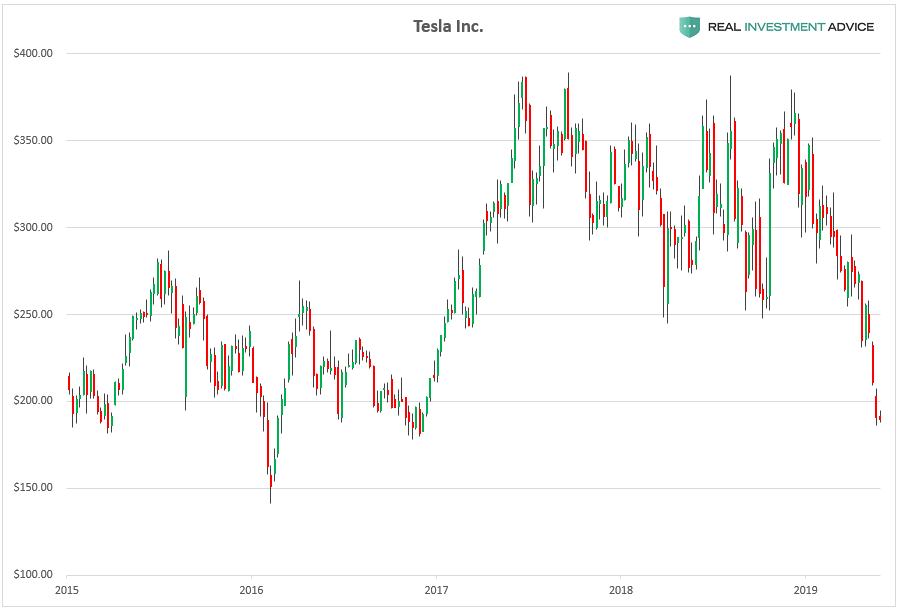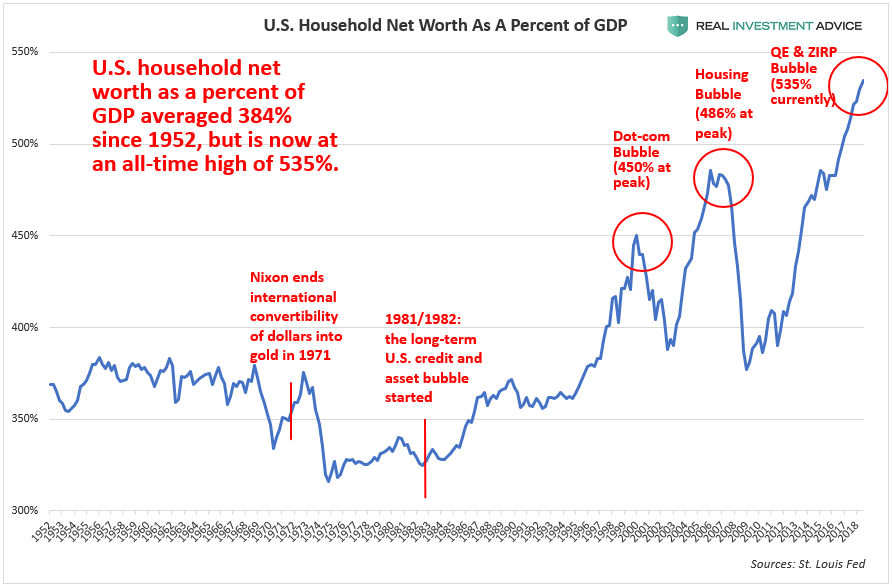Last week, Morgan Stanley analyst Adam Jonas shocked the investing world by cutting his worst-case forecast for Tesla stock from $97 to just $10 per share (it was trading at approximately $200 per share at the time of the announcement). Jonas cited the company’s heavy debt load and exposure to China as the main reasons for his downgraded outlook –
“The reduction in our bear case to $10 is driven primarily by our concerns around Chinese demand for Tesla products.”
“Our revised bear case assumes Tesla misses our current Chinese volume forecast by roughly half to account for the highly volatile trade situation in the region, particularly around areas of technology, which we believe run a high and increasing risk of government/regulatory attention.”
Tesla’s stock price has plunged by over 50% or $200 since its peak in December:

(We actually recommended a short position in Tesla back in April in our RIA PRO premium subscription service. Click here to try this service free for 30 days.)
While most analysts and financial journalists completely laughed off Adam Jonas’ $10 worst-case forecast for Tesla stock, what immediately came to my mind was that it was not far-fetched at all. While Jonas’ basis for that price was the company’s heavy debt load and exposure to China, which are both valid risks in their own right, I have been warning about a much larger macro risk that virtually nobody else is discussing: Tesla’s exposure to the U.S. household wealth bubble. I discussed this risk in November in a piece called “Here Are The Hidden Risks That Will Sink Tesla” and I still hold the same view now.

To summarize my argument, U.S. household wealth has been experiencing a bubble in recent years because the Fed has artificially inflated stock and bond prices. This household wealth bubble has created a wealth effect that has helped to temporarily boost consumer spending, including sales of Tesla automobiles. As much as Tesla has been struggling (Tesla lost nearly $1 billion in 2018 and $2 billion in 2017), those struggles are occurring during the largest wealth bubble that has ever occurred in America’s history. If Tesla can’t make it in this frothy environment, they’re not going to make it period. Unfortunately, like all bubbles, today’s household wealth bubble will violently burst, just like it did in the early-2000s and in 2008 and 2009. When that happens, Tesla will bleed red ink like never before and $10 per share may become a reality.